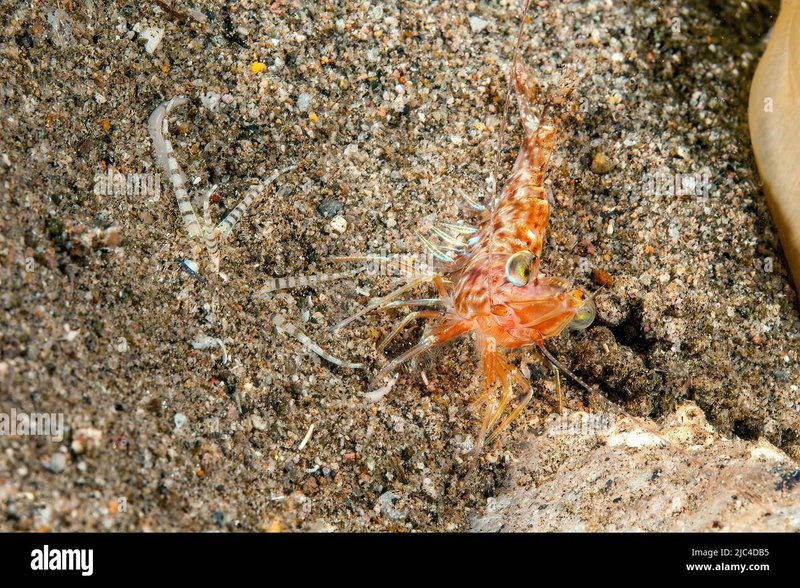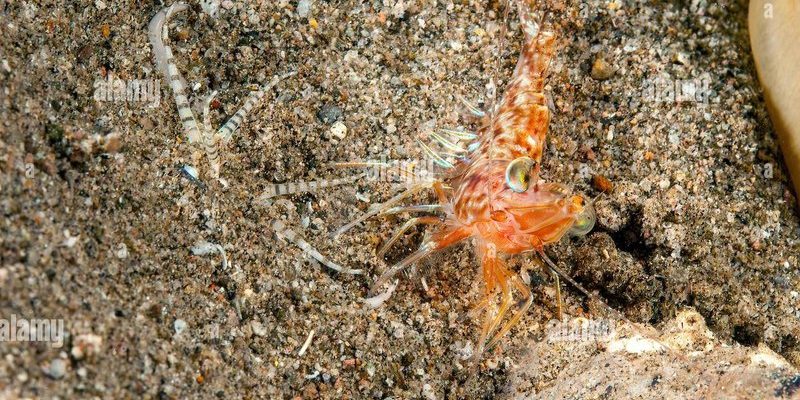
When it comes to prey selection, Bobbit worms have some serious skills. They’re equipped with powerful jaws and unique hunting techniques that allow them to ambush animals smaller than themselves. Their strategy? To select prey based on what’s available and, more importantly, what’s most nutritious. In this article, we’ll dive deep into the world of Bobbit worms, comparing their choices between fish and crustaceans, and exploring why these choices matter in their ecosystem.
Understanding Bobbit Worms
Bobbit worms, scientifically known as *Eunice aphroditois*, are fascinating creatures that can reach incredible lengths, sometimes exceeding 10 feet. Encased in a protective burrow, these worms lay in wait, resembling an oversized, segmented appendage poking through the substrate. They rely on a unique *ambush* technique for hunting—essentially, they act like a coiled spring that’s ready to shoot out when prey comes near.
These worms thrive in warm, shallow seas and are widely distributed throughout tropical and subtropical regions. They have a reputation for being aggressive hunters, and their long, segmented bodies can be quite intimidating. The way they blend into their surroundings makes them excellent predators, waiting patiently for the right moment to strike.
You might be wondering about their diet and what makes them so effective at catching prey. Bobbit worms are known for being opportunistic feeders, targeting whatever swims or crawls into their vicinity. This brings us to a critical part of their hunting strategy: their prey selection.
Prey Selection Criteria
When it comes to selecting prey, Bobbit worms evaluate several factors. The first is **availability**—they go after what’s nearby. If fish are abundant in the area, they’ll take advantage of that. Conversely, if the local crustacean population is high, you can bet the worms will feast on those critters instead.
Another important criterion is the **nutritional value** of potential prey. Bobbit worms are not picky eaters, but they do tend to favor prey that offers the most bang for their buck, so to speak. For instance, larger fish generally pack more nutrients than smaller ones, while certain crustaceans provide essential fats and proteins.
Lastly, Bobbit worms also consider the **size** of their prey. They can only tackle animals that are manageable; a large fish isn’t worth the effort if it’s too big to handle. This ability to assess and choose based on criteria plays a crucial role in their survival and growth.
How Bobbit Worms Catch Their Prey
Bobbit worms are experts at ambushing their meals. They often remain hidden, with only a fraction of their body visible above the surface of their burrow. When a fish or crustacean swims or crawls too close, the worm springs into action. Think of it like a trapdoor spider, ready to snatch up unsuspecting prey.
When a potential meal comes near, the Bobbit worm extends its powerful jaws, which can deliver a painful bite. They have sharp, tooth-like structures that allow them to grasp and immobilize their prey quickly. After catching their meal, they pull it into their burrow where they can consume it safely, away from predators.
This hunting strategy is why their choice between fish and crustaceans is essential. The worm’s ability to ambush and overpower is often influenced by the prey’s behavior—fast-swimming fish may escape their grasp, whereas slower-moving crustaceans might not stand a chance.
Comparing Fish and Crustaceans as Prey
Let’s take a closer look at the two main types of prey Bobbit worms pursue: fish and crustaceans. Each choice comes with its pros and cons.
– **Fish**: Bobbit worms often target small fish like minnows or juvenile species. Fish offer a significant protein punch, but their rapid, unpredictable movements can make them more challenging to catch. The balance of energy expenditure versus nutritional gain is key here. If the worm can successfully capture a fish, it benefits greatly.
– **Crustaceans**: On the flip side, crustaceans like shrimp and crabs tend to be slower and easier for the worms to ambush. These animals also have hard exoskeletons, which can provide necessary minerals to the Bobbit worm’s diet. However, catching crustaceans may require more stealth and strategy since they often inhabit crevices and rocks where they can hide.
In summary, while Bobbit worms can adapt their hunting strategies based on what’s available, the choice can significantly impact their energy efficiency and nutritional intake.
The Impact of Environmental Factors
The habitat of Bobbit worms plays a crucial role in prey selection. Various environmental factors can influence whether fish or crustaceans are more accessible. For instance, seasonal changes can lead to fluctuations in fish populations. During spawning seasons, fish might be more abundant, giving worms a feast.
Likewise, factors such as **water temperature**, **salinity**, and **substrate type** can affect the availability of both fish and crustaceans. Warmer waters might boost crustacean breeding, while cooler waters might see more fish activity.
Pollution and habitat destruction can also influence prey selection. Changes to the ecosystem can disrupt food availability, forcing Bobbit worms to adjust their diet or hunting strategies.
Bobbit Worms: Their Role in the Ecosystem
Bobbit worms are more than just fascinating predators; they play a significant role in the marine ecosystem. By feeding on both fish and crustaceans, they help regulate these populations, contributing to a balanced environment.
Their hunting practices also add diversity to the diets of larger predators. Fish that evade Bobbit worms may become food for other marine creatures, creating a complex food web. Essentially, they are a key player in maintaining the balance of marine life.
Additionally, the presence of Bobbit worms can indicate the health of their ecosystems. A stable and thriving population of these worms can signal that the environment is well-suited for a variety of marine life.
So, what can we take away from the prey selection of Bobbit worms? The choices between fish and crustaceans highlight how adaptable and strategic these curious creatures really are. Their hunting methods are not only impressive but crucial to understanding their role in the ocean’s delicate balance.
Ultimately, Bobbit worms continue to amaze researchers and nature enthusiasts alike. As we learn more about their preferences and behaviors, we appreciate the intricate web of life beneath the waves. The next time you think about marine predators, consider the Bobbit worm and how its choices shape the underwater world.

